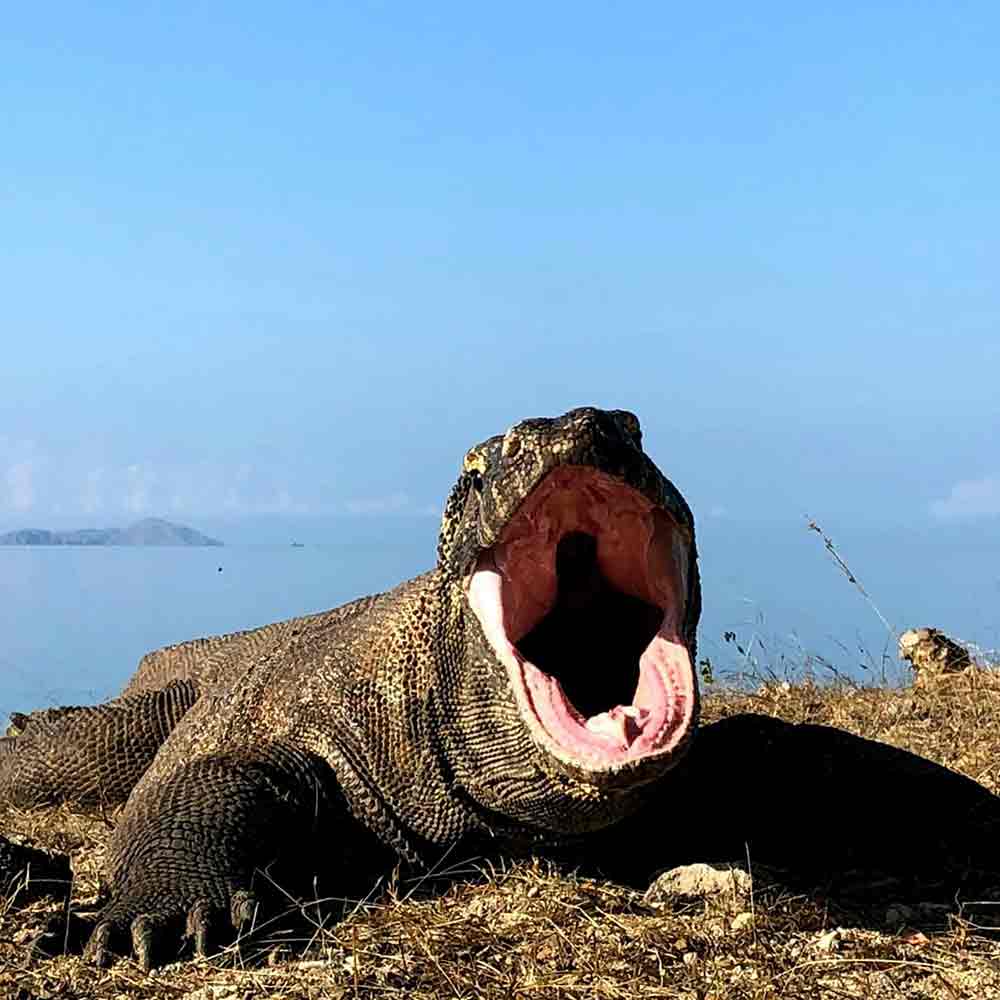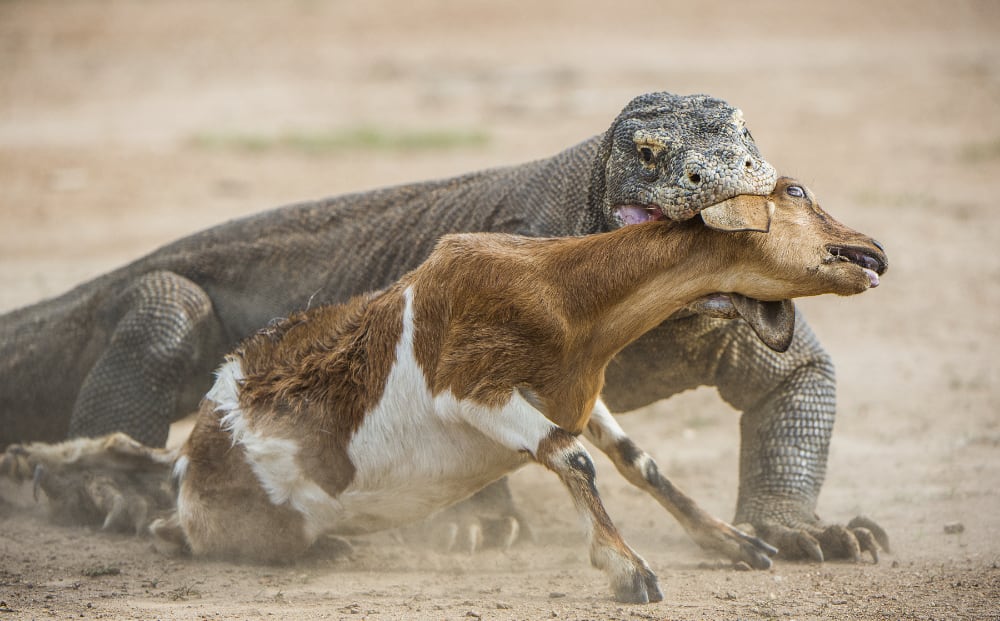Video has appeared on social media of a Komodo dragon (Varanus komodoensis) taking down a small deer.
Video has appeared on social media of a Komodo dragon (Varanus komodoensis) taking down a small deer. The large, carnivorous lizard quickly subdues the deer and then walks off into the bush as a camera operator records. The lizard then swallows the animal whole. The encounter was shared to Instagram by @animals_powers, an account that touts itself as providing the “Best Animal Photos & Videos from Around the World. The account has 1.3 million followers.
View this post on Instagram
The World’s Largest Lizard
Komodo dragons are the largest lizards (Varanus komodoensis) in the world and are found only within Komodo National Park, a UNECSO World Heritage Site. The Komodo dragon can grow to nine feet in length and weigh up to 250 lbs. The reptile is the apex predator in the park and is an excellent swimmer, able to easily traverse the waters between the Indonesian islands of Komodo, Rinca, Flores, and Gili Motang. The massive lizard can also dive up to 4.5 meters deep.

The jaws of the Komodo dragon are used to take down Timor deer, water buffalo, wild boar, and even rats. Photo by Anne Astorga
It is said to have bacteria in its saliva, specifically E. coli, Staphylococcus sp., Providencia sp., Proteus morgani and P. mirabilis. In 2009, researchers with the University of Melbourne published evidence that the large lizard also possessed a venomous bite. The Komodo dragon is also known to reproduce via parthenogenesis, in which growth and development of embryos occurs without fertilization from a male.
Komodo Dragon Reclassified As Endangered Species
Komodo Dragons Threatened By Rising Sea Levels And A Warming Planet, Scientists Say
In 2021, the reptile was reclassified as an endangered species, with scientists estimating just 1,500 Komodo dragons on Komodo Island and 1,300 dragons on Rinca island. The other islands had significantly fewer reptiles. According to the scientists, the lizard’s populations in the wild will be negatively affected by rising global temperatures due to climate change, which in turn will cause a rise in sea levels that researchers say will lead in a 30 percent decrease in habitat for the Komodo dragon during the next 35 years. The Komodo dragon also is negatively impacted by agricultural expansion that depletes their suitable habitat.
Captive breeding efforts of the Komodo dragon have been successful in the United States, with the Los Angeles Zoo, Memphis Zoo and others having hatched the species in the past.
Komodo Dragon Information
Komodo dragons are the largest lizards in the world and are native to Indonesia. The lizard is a carnivore and in the wild has been documented taking down large deer. Timor deer and water buffalo are common prey items of this reptile. The reptile is an endangered species with an estimated 2,500 to 4,000 lizards left in the wild. They live in Komodo National Park in Indonesia. The Komodo dragon is also potentially threatened by the invasive Asian common toad (Duttaphrynus melanostictus). This species has left a trail of dead native species wherever it has been introduced, according to a 2017 study of the toad. If the amphibian gains a foothold on any of the islands where the Komodo dragon lives, it could result in population declines, as the toad is poisonous.


